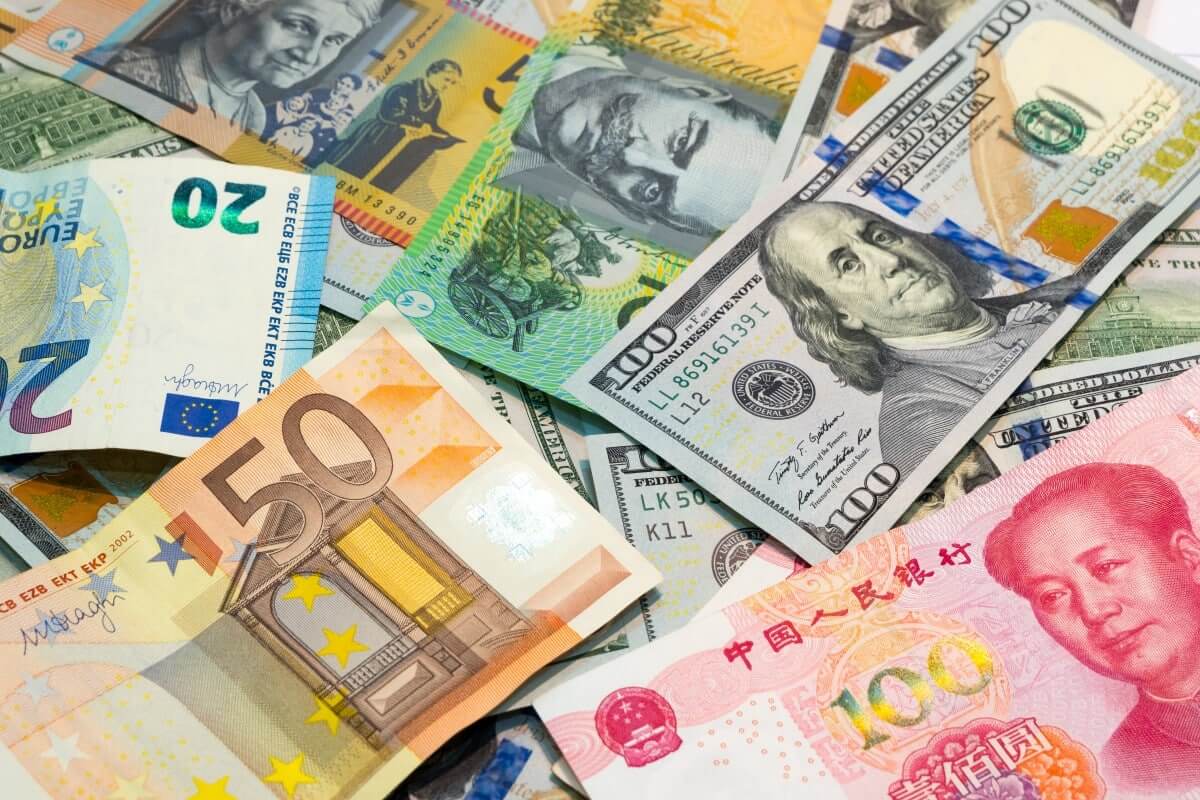
The euro remained high on Friday, while the dollar declined
The euro skyrocketed this week. It exchanged hands at $1.08735 on Friday. The currency plummeted by 0.28% on the day. Despite that, it was set to end this week with a 1% gain. That is its biggest rally in 11 weeks.
The Eurozone inflation data showed that prices are still pretty high. That means the European Central bank will have to continue hiking its interest rates, more so than the United States. This news bolstered the common currency.
According to a new report, eurozone inflation plunged by the most on record this month. At the same time, core price pressures, excluding energy and food, deepened. The latter weighs on the European Central Bank, forcing it to keep hiking rates. On Thursday, German inflation data also contributed to the euro’s rally, sending the currency higher by 0.56%.
Analysts at Nomura noted that they expect the ECB to continue it’s tightening policy. The bank already declared that it would continue increasing rates if its baseline scenario for core inflation materializes. The bank is also waiting for markets to calm down after the fears about the banking sector’s recession caused volatility. If no other obstacles appear, the ECB will continue its hawkish course.
On Friday, the dollar index seemed set to end this week in the red again. Investors focused on new U.S. data. The core personal consumption expenditures (PCE) price index will influence the Federal Reserve’s decision about future policy. This data is due later on Friday.
How is the U.S. dollar trading now?
The dollar index tumbled by 1.2% for the quarter. The currency extended a 7.7% drop in the Q4 of 2022. While it gained a modest amount in mid-March due to investors’ risk-off sentiment, it wasn’t enough to push the index higher from the bearish territory.
The failure of two U.S. regional banks also weighed on the greenback. Forex markets are pricing an approximately 40% chance that the U.S. central bank ends its rate increases. If that happens, the dollar will decline again.
The index climbed up by 0.2% daily, exchanging hands at 102.37 on Friday. It jumped by 0.36% against the Japanese yen, trading at 133.17 yen. The greenback seemed poised to close out the week higher after suffering losses in the previous four weeks, even though it fell quarterly. Over the last week, the Japanese currency also soared thanks to its safe haven status, but it shaved off some of those gains over the last sessions.
In Europe, the British pound became the best-performing currency in the Q1 of this year. It was set to end the quarter with about a 2.5% gain. However, the sterling remained flat on Friday, exchanging hands at $1.2386.
Francesco Pesole, the FX strategist at ING, noted that the improved British economic outlook bolstered the sterling. In addition, the market players believe that the Bank of England will continue hiking rates. Such sentiment also supports the currency.
The Swiss franc fluctuated over this week. It skyrocketed after the unexpected collapse of Silicon Valley Bank due to its safe-haven status. However, the currency plummeted again as the fears about the banking sector hit its country. On Friday, the franc traded at 0.914 per USD. It will likely end the month near its 18-month high of 0.9061, which hit early in February.
What about the Aussie and EM currencies?
The New Zealand dollar exchanged hands at $0.6257 on Friday. The Aussie stood at $0.6690. The Australian currency dropped by 1.8% in this quarter. Both Australia and New Zealand’s central banks have meetings scheduled next week. Traders expect the Australian central bank to leave its interest rates the same, while New Zealand’s central bank might increase them by 25 basis points.
The Chinese yuan gained today, supporting the Aussie and Kiwi. Chinese manufacturing activity is slowing, but the currencies continue to rise.
Emerging Asian currencies also traded in the green on Friday. Furthermore, most currencies in the region seemed set to end this quarter with gains. Indonesia’s rupiah showed a record 3.8% increase. Meantime, the rupiah added 0.5% today, hitting an almost two-month peak. Maybank analysts noted that the rupiah could gain more soon if there is further greenback weakness.
On Friday, the South Korean won, and Malaysia’s ringgit rallied by 0.3% each. The Indian rupee added 0.2%, as well.




